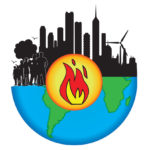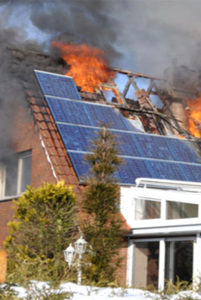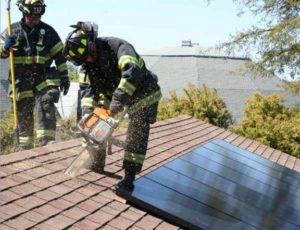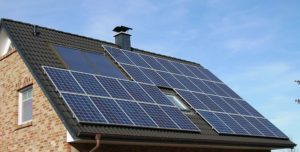2017-01-05: Happy New Year to All and One !
SUSTAINABLE FIRE ENGINEERING (SFE)
The creative, person-centred and ethical fire engineering response – in resilient built or wrought form, and using smart systems – to the intricate, open, dynamic and continually evolving concept of Sustainable Human & Social Development … the many aspects of which must receive balanced and synchronous consideration.
1. Fire Safety for ALL – Not Just for SOME People. Nobody Left Behind !
Do Building Designers and Fire Engineers have any understanding of what it feels like to be left behind in a fire emergency … perhaps to die ?
Do Building Designers and Fire Engineers have any understanding of the ‘real’ people who use their buildings … or their ‘real’ needs ?
2. Firefighter Safety – It’s So Easy to Dramatically Improve Their Safety At A Fire Scene ! A Firefighter’s Protective Clothing and Equipment are not enough !
Conscious awareness of this issue by Building Designers and Fire Engineers is required … and appropriate education/training.
3. Property Protection – A Minor Code Fire Safety Objective, Insofar As It Is Necessary to Protect the Safety of Building Users … Only !
Fire damage and post-fire reconstruction/refurbishment are a huge waste of resources. On the other hand, protection of an organization’s image/brand is important … and business continuity is essential.
Heritage Fire Losses cannot be replaced !
To properly protect Society and the interests of a Client/Client Organization … Building Designers and Fire Engineers are ethically bound to clearly explain the limitations of Code and Standard Fire Safety Objectives to their Client/Client Organization.
4. Environmental Impact – Prevention Is Far, Far Better Than Cure. Instead of resisting, and erecting ‘professional’ barriers … Spatial Planners, Building Designers and Fire Engineers must begin to properly understand this concept … and act ethically to defend and protect the environment !
Environmental Impact: Any effect caused by a given activity on the environment, including human health, safety and welfare, flora, fauna, soil, air, water, and especially representative samples of natural ecosystems, climate, landscape and historical monuments or other physical structures, or the interactions among these factors ; it also includes effects on accessibility, cultural heritage or socio-economic conditions resulting from alterations to those factors.
This Planet – Our Common Home – can no longer suffer the scale and extent of total devastation seen after the 2015 Tianjin (China) Regional Fire Disaster !
5. Building Innovation, People and Their Interaction – Fire Engineers and Firefighters must understand current approaches to more sustainable building design, the ‘real’ people who use the built environment, and the complex interactions between both.
People with Activity Limitations (E) / Personnes à Performances Réduites (F): Those people, of all ages, who are unable to perform, independently and without aid, basic human activities or tasks – because of a health condition or physical/mental/cognitive/psychological impairment of a permanent or temporary nature.
The above Term, in English and French, includes …
- people who experience difficulty in walking, with or without a facilitation aid, e.g. stick, crutch, calliper or walking frame ;
- wheelchair users ;
- the very young (people under 5 years of age), frail older people, and women in the later stages of pregnancy ;
- people who are visually and/or hearing impaired ;
- people who suffer from arthritis, asthma, or a heart condition … or any partial or complete loss of language related abilities, i.e. aphasia … or who have a cognitive impairment disorder, including dementia, amnesia, brain injury, or delirium ;
- people impaired after the use of alcohol, other ‘social’ drugs e.g. cocaine and heroin, and some medicines … or following exposure to environmental pollution and/or other irresponsible human activity, e.g. war or terrorism ;
- people who experience a panic attack in a real fire situation or other emergency ;
- people, including firefighters, who suffer incapacitation as a result of exposure, during a real fire, to smoke and poisonous/toxic substances and/or elevated temperatures.
6. Sustainable Design & Engineering – Get With The Programme ! The extensive United Nations 2030 Sustainable Development Framework Agenda was overwhelmingly agreed and adopted in 2015.
Sustainability Impact Assessment (SIA): A continual evaluation and optimization process – informing initial decision-making, design, shaping activity/product/service realization, useful life, and termination or final disposal – of the interrelated positive and negative social, environmental, economic, institutional, political and legal impacts on balanced and equitable implementation of Sustainable Human & Social Development.
‘Carrots and Sticks’ can only achieve so much. Spatial Planners, Building Designers and Fire Engineers must – individually and as a group – subscribe to a robust Code of Ethics which is fit for purpose in today’s Human Environment.
2016 Dublin-Code-of-Ethics: Design, Engineering, Construction & Operation of a Safe, Resilient & Sustainable Built Environment for All (PDF File, 112Kb)
SUSTAINABLE FIRE ENGINEERING (2017)
New CIB W14: ‘Fire Safety’ Research Working Group VI Reflection Document: ‘Sustainable Fire Engineering Design, Construction & Operation’, which will establish a framework for the future development of Sustainable Fire Engineering.
Preparation of this Document will soon begin, and the following issues will be explored:
- Conceptual Framework for Sustainable Fire Engineering (SFE), with a necessary accompanying Generic SFE Terminology ;
- Strategy for Future SFE Development ;
- Implementation of 2005 & 2008 NIST WTC 9-11 Recommendations ;
- Fresh, New SFE Research Agenda ;
- Resilient Implementation of SFE Research Agenda.
Would you like to get involved, and help with this work ?
.
PRIORITY THEME 1 – FIRE SAFETY FOR ALL (2017)
The Fire Safety Task Group, chaired by CJ Walsh, of ISO Technical Committee 59, Sub-Committee 16, Working Group 1, has already commenced the revision and further development of the fire safety texts in International Standard ISO 21542 (2011): ‘Building Construction – Accessibility & Usability of the Built Environment’.
The main effort, initially, has been focused on developing a coherent Fire Safety for All approach … token consideration, or a post-design graft-on, of the fire safety needs of people with activity limitations do not work, and are unacceptable.
Progress with this work can be followed here: http://www.fire-safety-for-all.sustainable-design.ie/iso-21542/
The next ISO Meeting will take place in Madrid, Spain … towards the end of March 2017.
Would you like to get involved ?
.
AND … Would you like to discuss any of the above issues ? Well … Why not join the LinkedIn SFE Group at: https://www.linkedin.com/groups/8390667 ??
.
.
END




